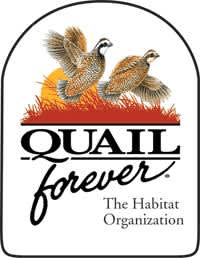Glass Half Full, Half Empty for “Bobwhite Buffers” Nationwide
Quail Forever 07.21.14

250,000 acres enrolled, but still 250,000 acres available for bobwhite quail conservation
With the reopening of federal Continuous Conservation Reserve Program (CRP) practices this summer, more than 250,000 acres – half the nationwide allotment – have been enrolled in the CRP “Habitat for Upland Birds” practice. This leaves about 250,000 available for signup by landowners, acres that, once enrolled, will improve habitat for bobwhite quail and other wildlife.
Officially known as Conservation Practice 33, the program is most commonly referred to as “bobwhite buffers” as the purpose of this practice is to reverse the long-term decline of quail and other upland bird populations by providing needed nesting and brood-rearing habitat adjacent to cropland. These important components of quail habitat have declined due to more intense grazing and cropping practices – resulting in the elimination of weedy field borders, abandoned farmsteads and small, recently disturbed areas loved by quail. There are currently 250,073 bobwhite buffer acres enrolled across the country.
“Many landowners still don’t know about the availability and advantages of this program,” says Rick Young, Quail Forever’s Vice President of Field Operations, “The ‘bobwhite buffers’ program is a ‘win-win’ – for landowners, it allows unproductive field margins to be restored to grassland habitat, often with net financial gains through practice incentives. Those grassland acres then provide critical habitat for quail and other upland wildlife.”
| State | Allocation (Acres) | Acres Currently Enrolled | Bobwhite Buffers Available (Acres) |
| Alabama | 1,770 | 1,191 | 579 |
| Arkansas | 10,900 | 5,605 | 5,295 |
| Colorado | 610 | 171 | 439 |
| Georgia | 3,400 | 2,222 | 1,178 |
| Idaho | 1,000 | 0 | 1,000 |
| Illinois | 73,200 | 63,260 | 9,940 |
| Indiana | 23,500 | 13,930 | 9,570 |
| Iowa | 46,500 | 25,522 | 20,978 |
| Kansas | 70,500 | 40,493 | 30,007 |
| Kentucky | 13,700 | 7,872 | 5,828 |
| Louisiana | 670 | 382 | 288 |
| Maryland | 1,500 | 738 | 762 |
| Michigan | 1,650 | 882 | 768 |
| Minnesota | 1,100 | 480 | 620 |
| Mississippi | 3,400 | 2,255 | 1,145 |
| Missouri | 52,300 | 34,350 | 17,950 |
| Nebraska | 12,000 | 6,053 | 5,947 |
| North Carolina | 12,900 | 8,722 | 4,178 |
| Ohio | 22,800 | 15,695 | 7,105 |
| Oklahoma | 1,600 | 1,048 | 552 |
| South Carolina | 8,800 | 5,553 | 3,247 |
| South Dakota | 6,500 | 1,509 | 4,491 |
| Tennessee | 7,000 | 5,208 | 1,792 |
| Texas | 10,000 | 4,885 | 5,115 |
| Virginia | 3,500 | 1,698 | 1,802 |
| Washington | 5,000 | 78 | 4,922 |
| Wisconsin | 660 | 290 | 370 |
Landowners interested in the bobwhite buffers practice can enroll at any time by contacting the Quail Forever or Pheasants Forever farm bill wildlife biologist in their area or by visiting their local USDA Service Center. There are more than 103,000 Conservation Practice 33 acres on reserve, meaning they will be allocated to states once current allotments are used up.

